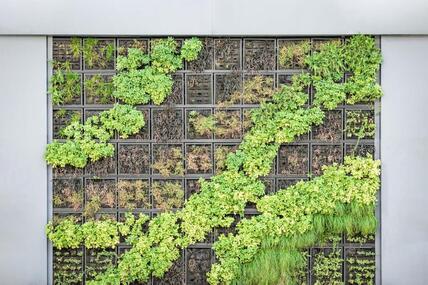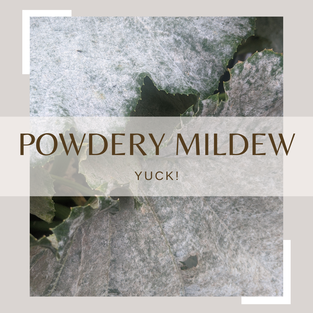 As the weather starts to get warmer, many homeowners are excited to breathe new life into their outdoor spaces, but creating a vibrant garden requires careful planning, preparation, and execution. In this article, we'll explore the key steps and factors to consider when revitalizing and prepping your outdoor environment. https://unsplash.com/photos/a-person-and-a-girl-in-a-garden-xLKVD1dXFdc
0 Comments
 In the vast realm of agriculture, launching and operating a mini-farm has the potential for rich rewards. Let's share these essential tips to help you navigate this profitable yet challenging endeavor, whether you're a long-time gardener or stepping into the farming world for the first time. ( Image via Pexels )  Since we do spend so much of our time outside our homes, from commuting to school or work or visiting the local eatery for some downtime, the condition of the public places we find ourselves in will often determine how much joy we derive from being out and about. Courtesy of Things Green, here are a few reasons why a safe outdoor public place can help uplift the general community in more ways than one.  As coffee lovers, it’s always a shame to throw away used coffee grounds. But did you know that there are actually many ways to use your used coffee grounds in the garden? Here are some ideas on how you can make the most of those leftover grounds: 1. Use them as an organic fertilizer for houseplants - Coffee is rich, albeit in low amounts, in nitrogen and other minerals which makes it great for helping plants grow strong and healthy. Just sprinkle a few spoonful’s onto the soil every month or so, then water as usual. Your plants will thank you! 2. Create a compost pile – Adding your used coffee grounds directly into your compost pile helps create nutrient-rich soil which can be added back into gardens or flower beds later on down the line when needed! It also helps with aeration, reducing odors from decomposing matter and attracting beneficial insects like earthworms too! 3 Make worm food – Worms love eating up old caffeine-infused leftovers from our morning cup of Joe (they must have good taste!). Get those worms hyped up on caffeine by simply adding some freshly brewed (or cold) ground beans directly into their bin once per week or so — they’ll be sure to appreciate this tasty treat while simultaneously creating richer castings (worm poo) for future plantings at home too!. So don't let those precious nutrients go unused any longer — put those spent grinds to work today by using them around your garden instead of throwing them out next time you brew up another pot o' Joe! Have a gardening question? Call NICK. 1-800-405-NICK (6425). Leave a message and we’ll call you back during the week. Fund facts: 20 Slang Terms for Coffee. 1 Joe 2. Dirt 3. Mud 4. Java 5. Brew 6. Cuppa 7. Go Juice 8. Jitter Juice 9. Bean Juice 10. Brain Juice 11. High Octane 12 .Wakey Juice 13. Morning Jolt 14. Liquid Energy 15. Caffeine Infusion 16. Cupped Lighting 17 . Leaded and Unleaded 18. Rocket Fuel (Strong Coffee) 19. Worm Dirt (REALLY Strong Coffee) 20. C8H10N4O2 (Caffeine Molecule) Want to talk coffee with Nick? Then call NICK. Really, call 1-800-405-NICK!  Question asked on the radio show: Someone on a Facebook group recently suggested that I use a fish hydrolysate for my potted plants. I have fish emulsion, is that okay to use? NICK answers the question like this on the radio: Great attempt at trying to pronounce that word. I’d pronounce it hydrolysate. Fish hydrolysate and a fish emulsion are two different things yet they are both used for fertilizing plants. One is better than the other. Fish emulsion is what is processed after the fish has been used for food then they'll make oils out of it, make up and other non-essential things. It's cooked down for all those products into a sludge which hammers most the nutrients out of it. Fish hydrolysate, on the other hand, is made after they use it for edible purposes usually making fish fillets and is a cold process that retains higher nutrients. If you visit Dramm.com and follow the consumer links to their Drammatic Organic Fertilizer they have information that talks about it in detail. My vote is for the hydrolysate.  Improve the ambiance and security of your home with outdoor lighting. Discover different types of outdoor lighting and useful tips to enhance your outdoor space with this comprehensive guide. Improve the ambiance and security of your home with outdoor lighting. Discover different types of outdoor lighting and useful tips to enhance your outdoor space with this comprehensive guide.  Modern architecture has taken root in Green Architecture. As cities evolve and greenery becomes a coveted asset, merging architecture with nature takes on new dimensions. This revolutionary concept not only redefines the aesthetics of homes but also promises many environmental, psychological, and economic benefits. These innovative green spaces are reshaping how we perceive, design, and experience residential living, promising a harmonious blend of nature and architecture like never before. Nurturing the urban ecosystem: benefits of vertical gardens In the concrete jungles of our cities, a green revolution is quietly taking root. Rooftop paradises and vertical vegetation are not just architectural innovations but champions of sustainability, ushering in a new era of urban design.  Organic powdery mildew control on vegetables is a common challenge for many gardeners. Powdery mildew is a fungal disease that affects the leaves and stems of various plants, especially those in the cucurbit family, such as cucumbers, melons, squash and pumpkins. Powdery mildew reduces the photosynthesis and yield of the plants, and can also affect the flavor and quality of the fruits. There are several organic methods to prevent and treat powdery mildew on vegetables. Some of them are: |
Categories |



 RSS Feed
RSS Feed